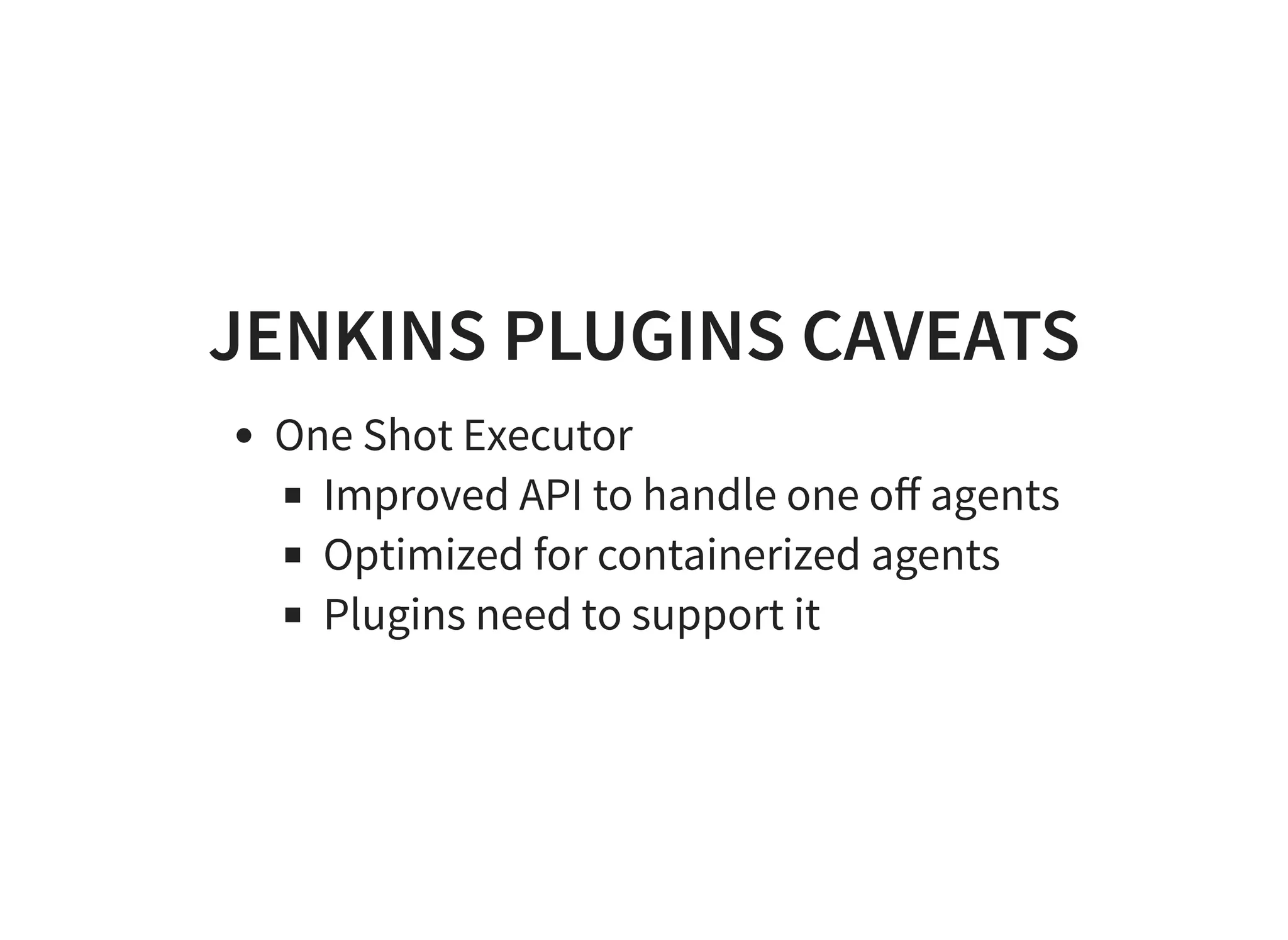This document discusses using containers for continuous integration and delivery with Jenkins. It covers running Jenkins in Docker containers, using Docker plugins with Jenkins, and running Jenkins pipelines in Kubernetes. Scaling Jenkins with more build agents or masters is discussed. When resource limits are exceeded in containers, the JVM or CPU is restricted instead of the container being killed. The Jenkins Kubernetes plugin allows dynamically running Jenkins agents as Kubernetes pods.
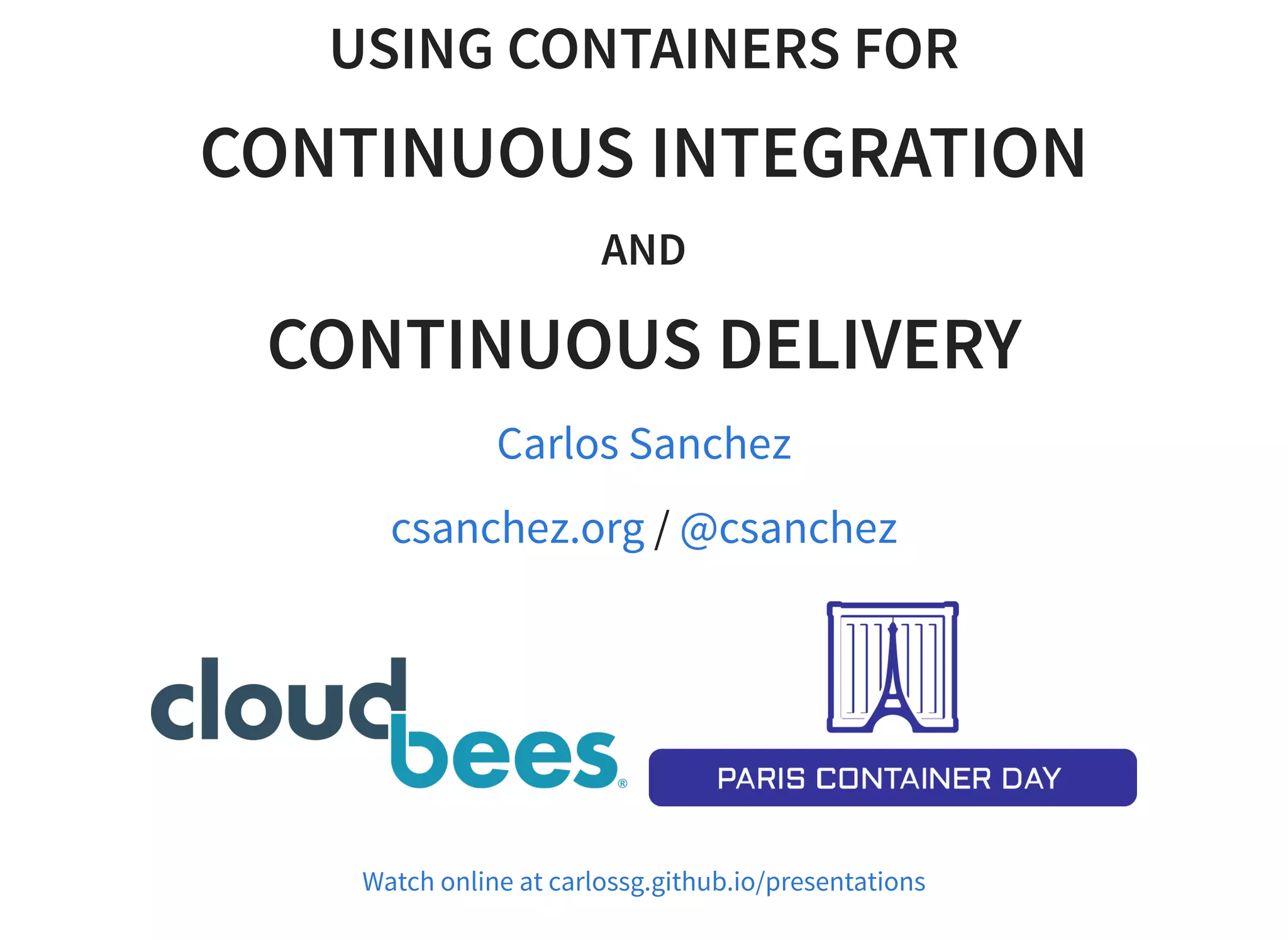

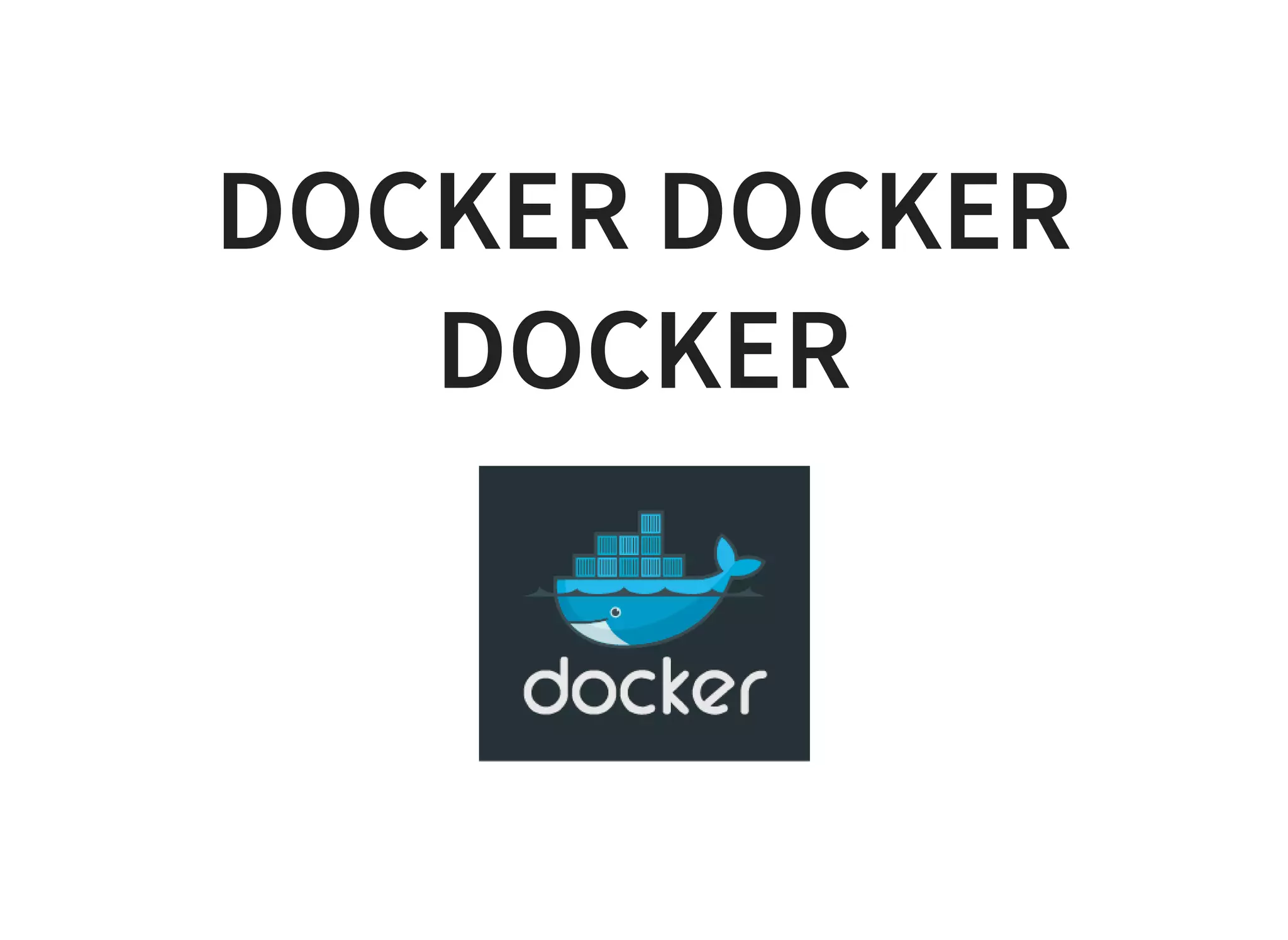
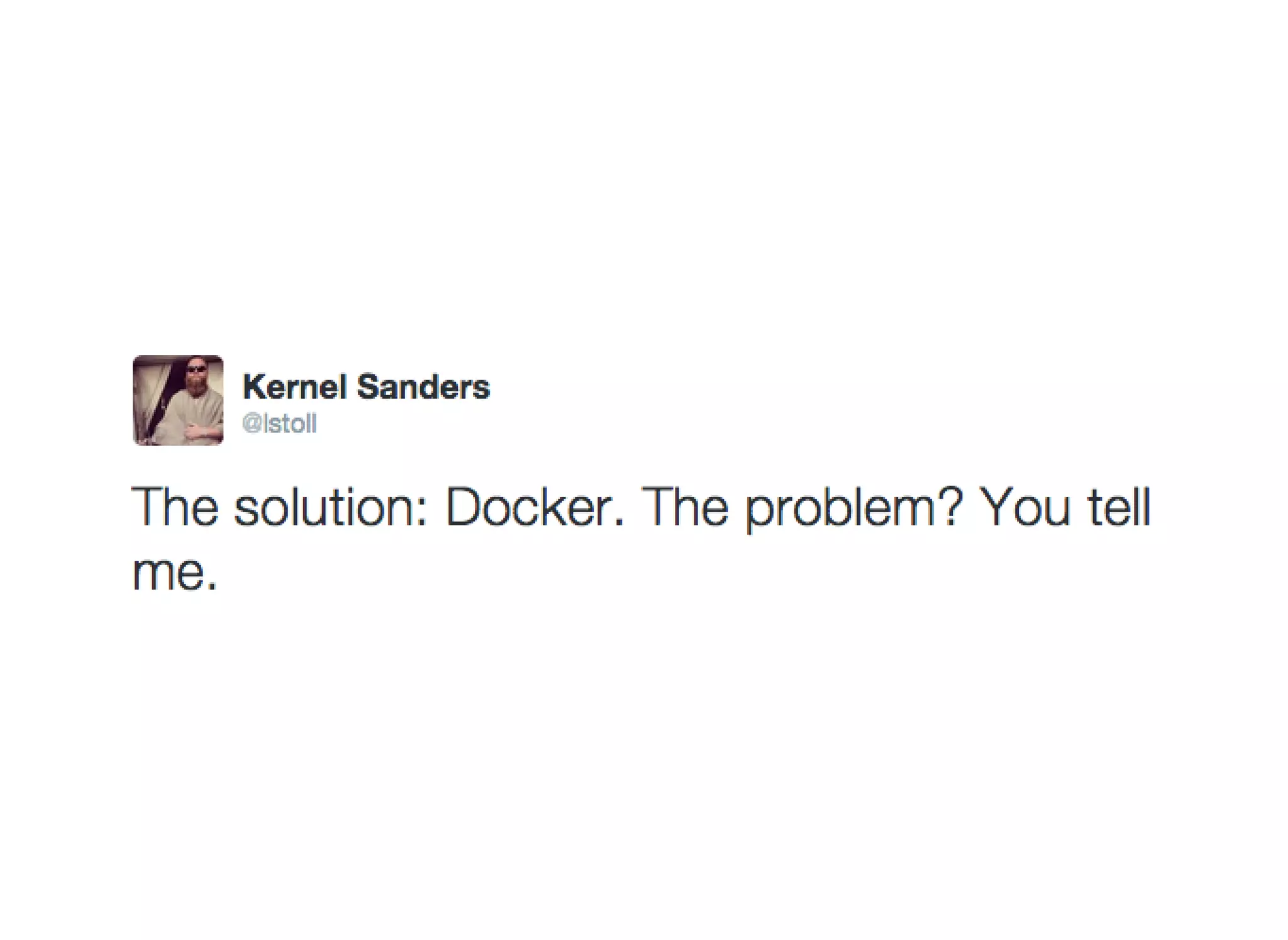
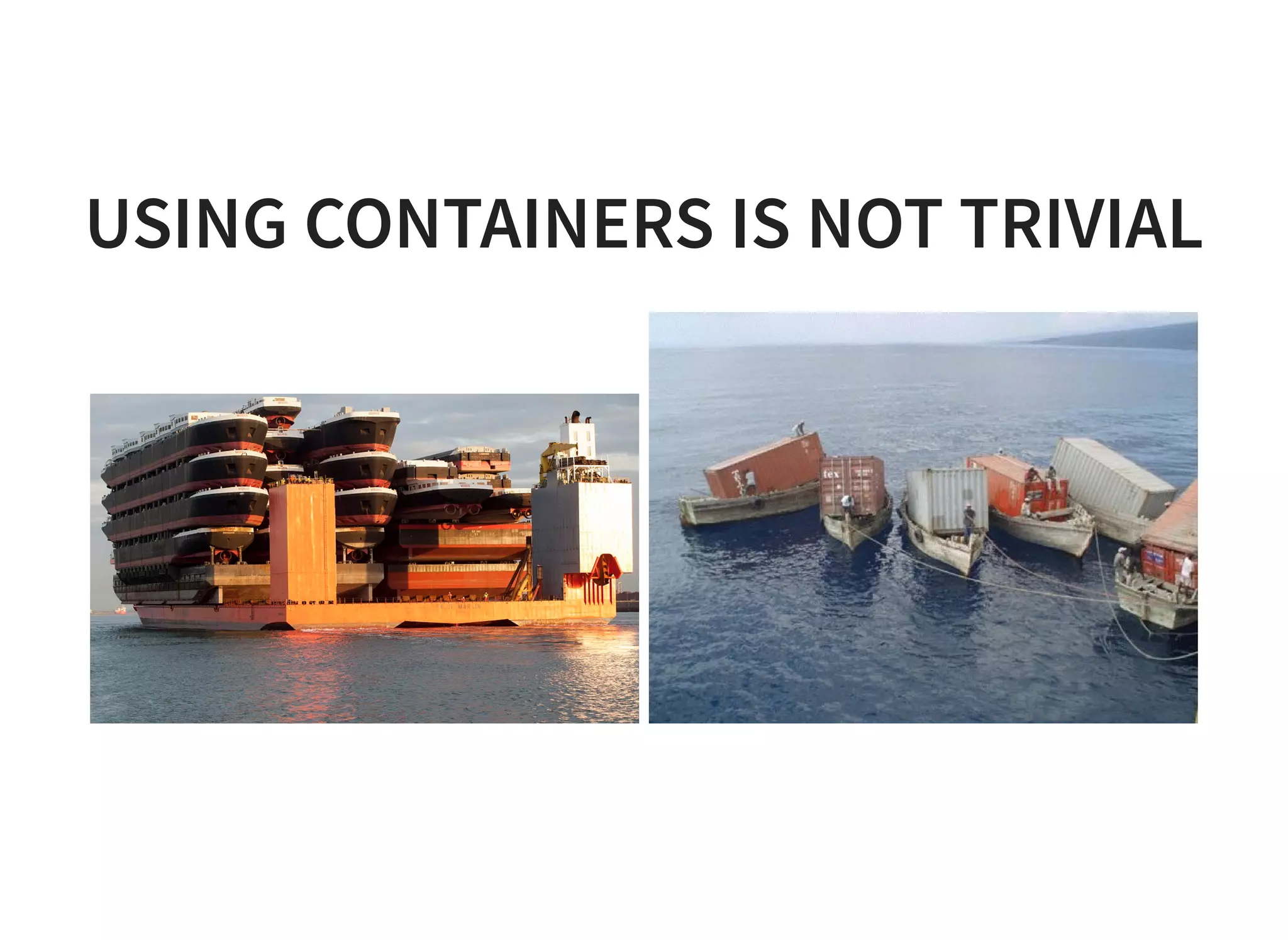
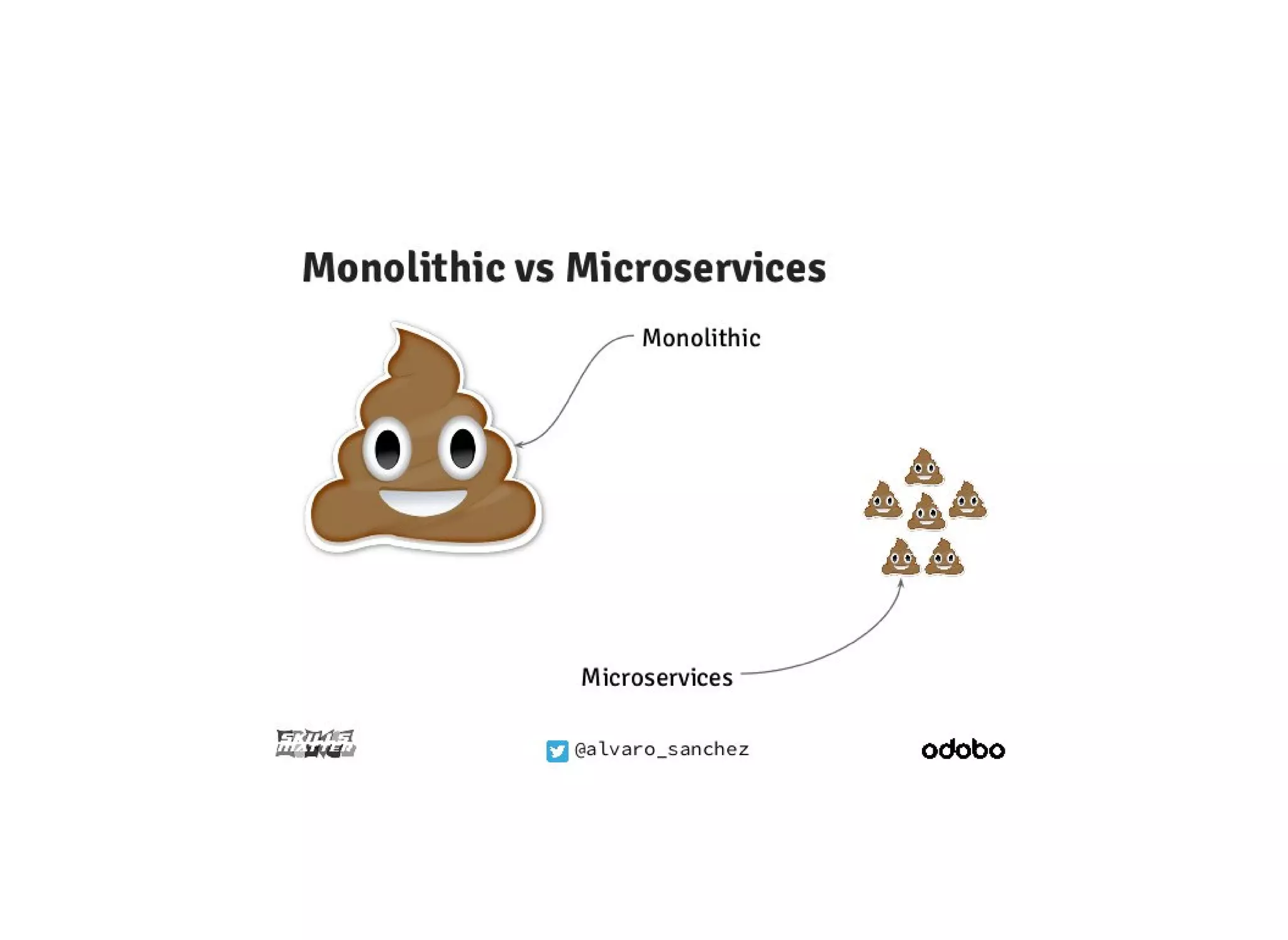
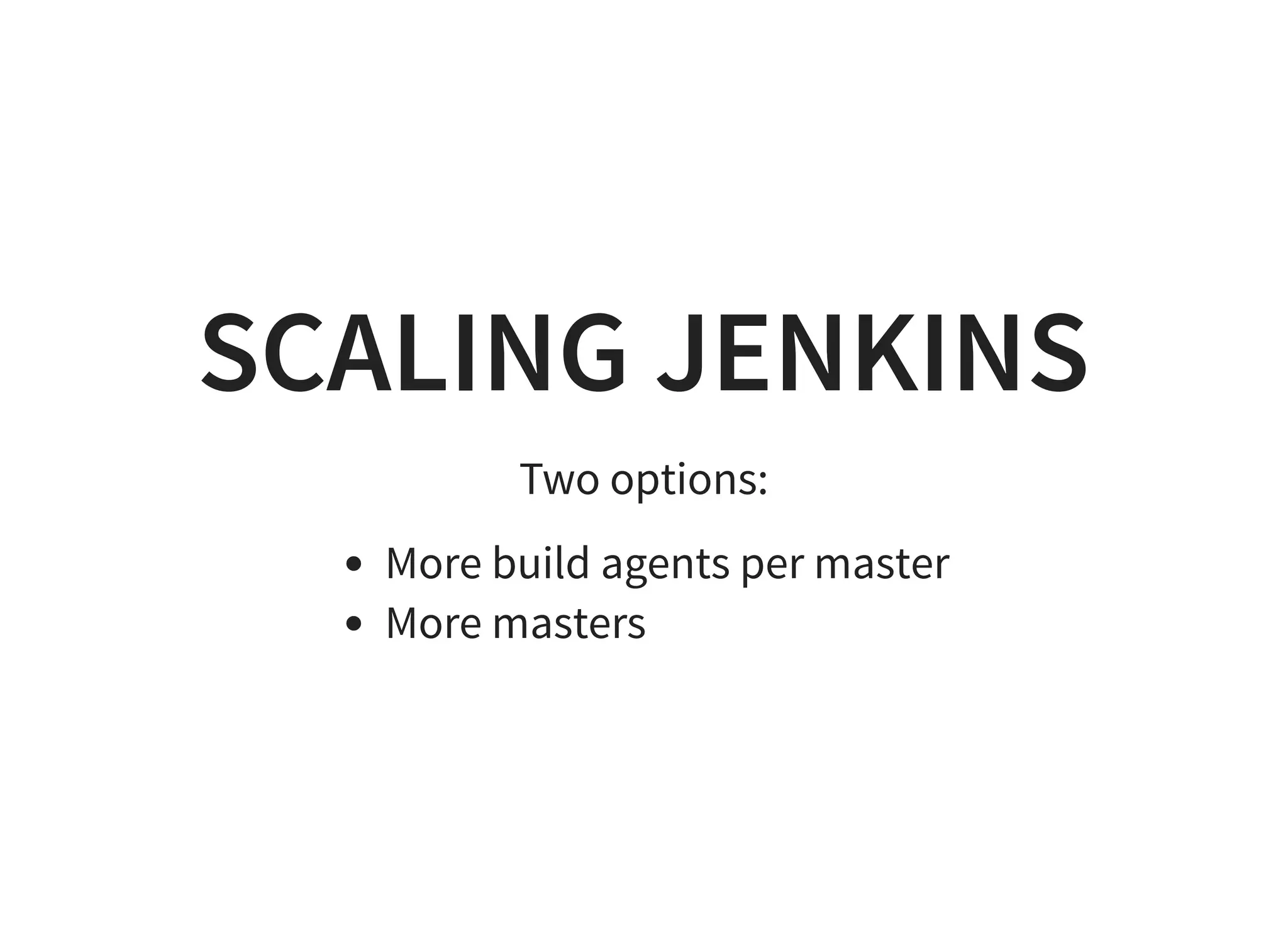

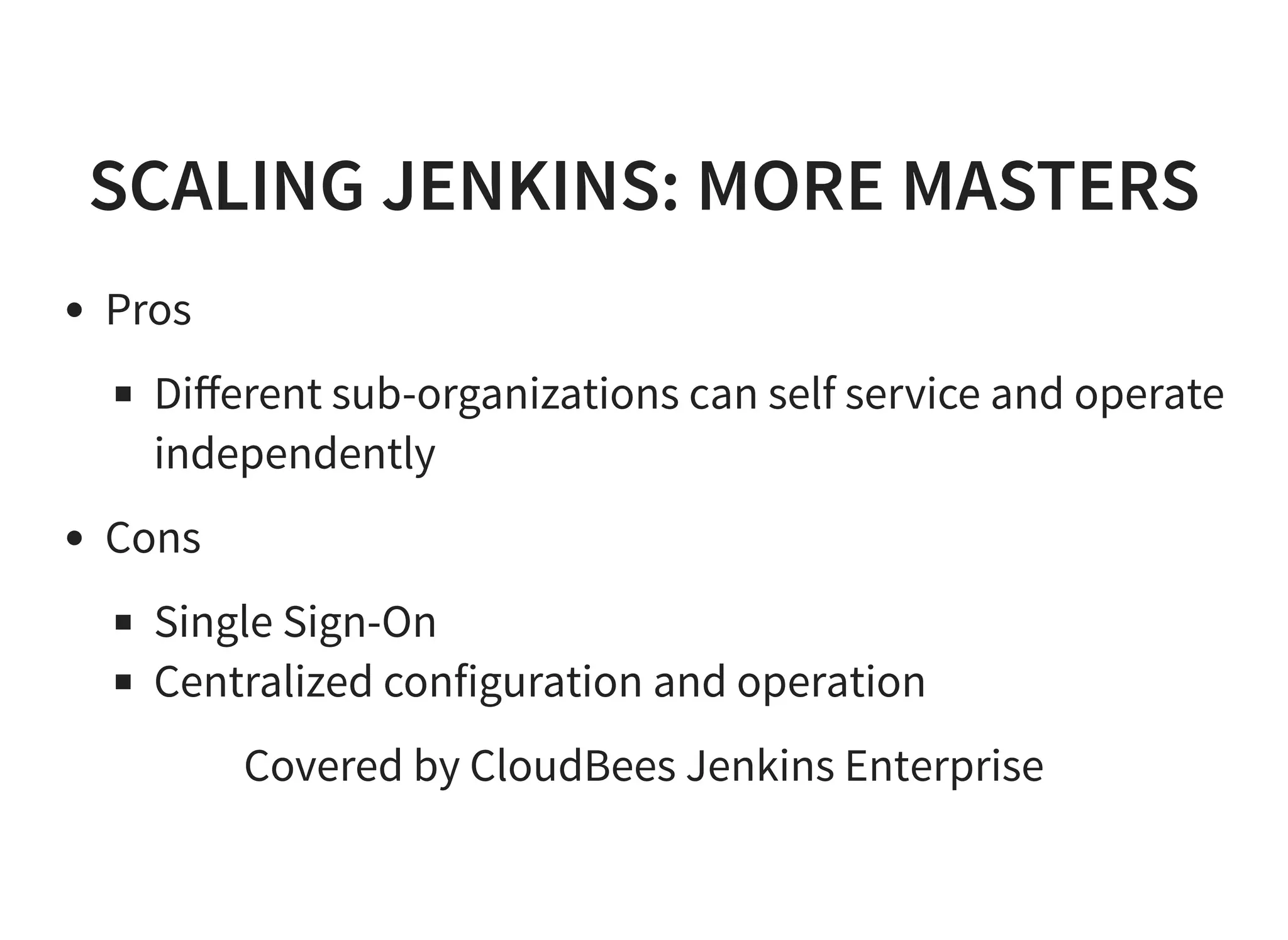
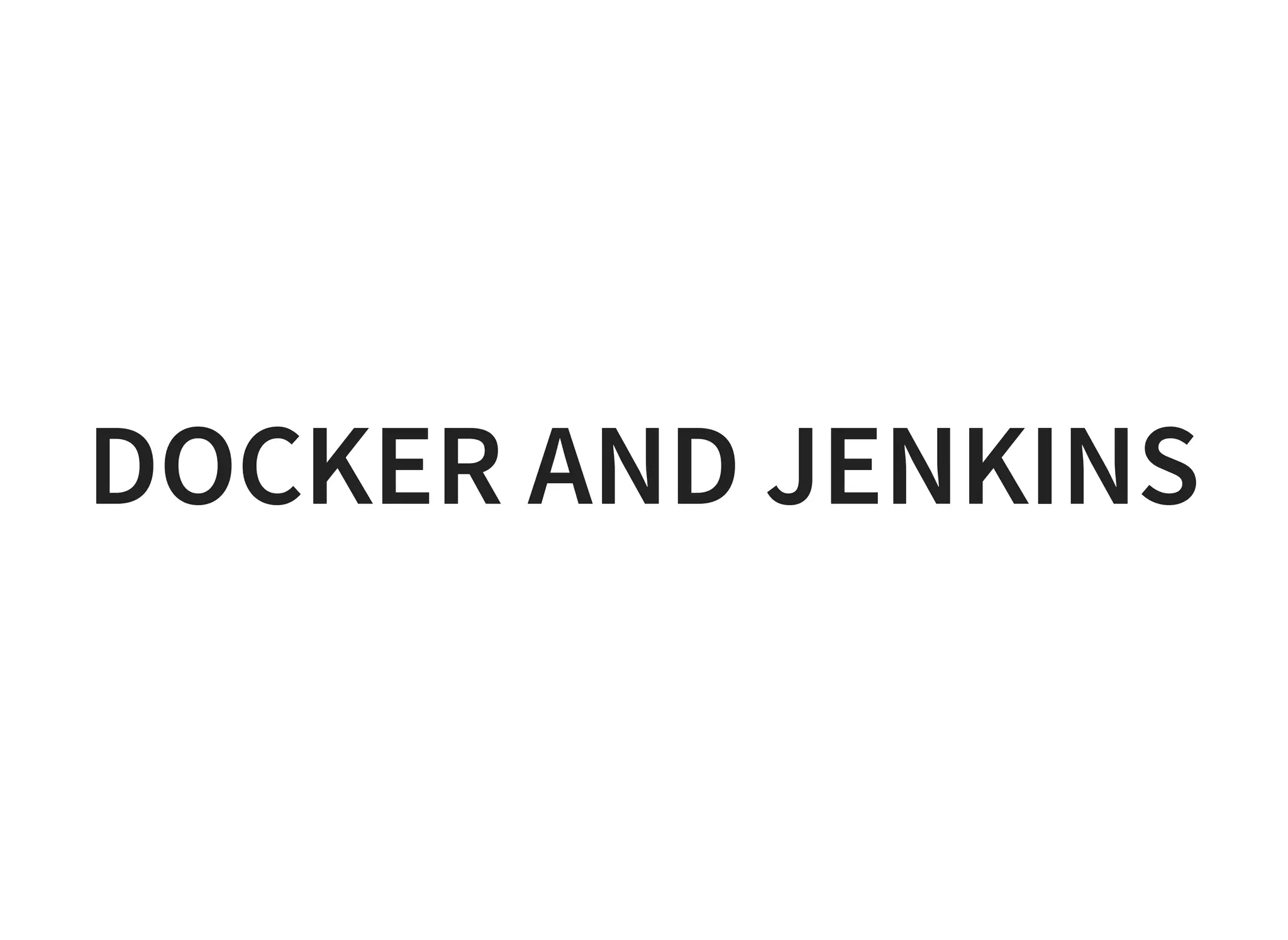



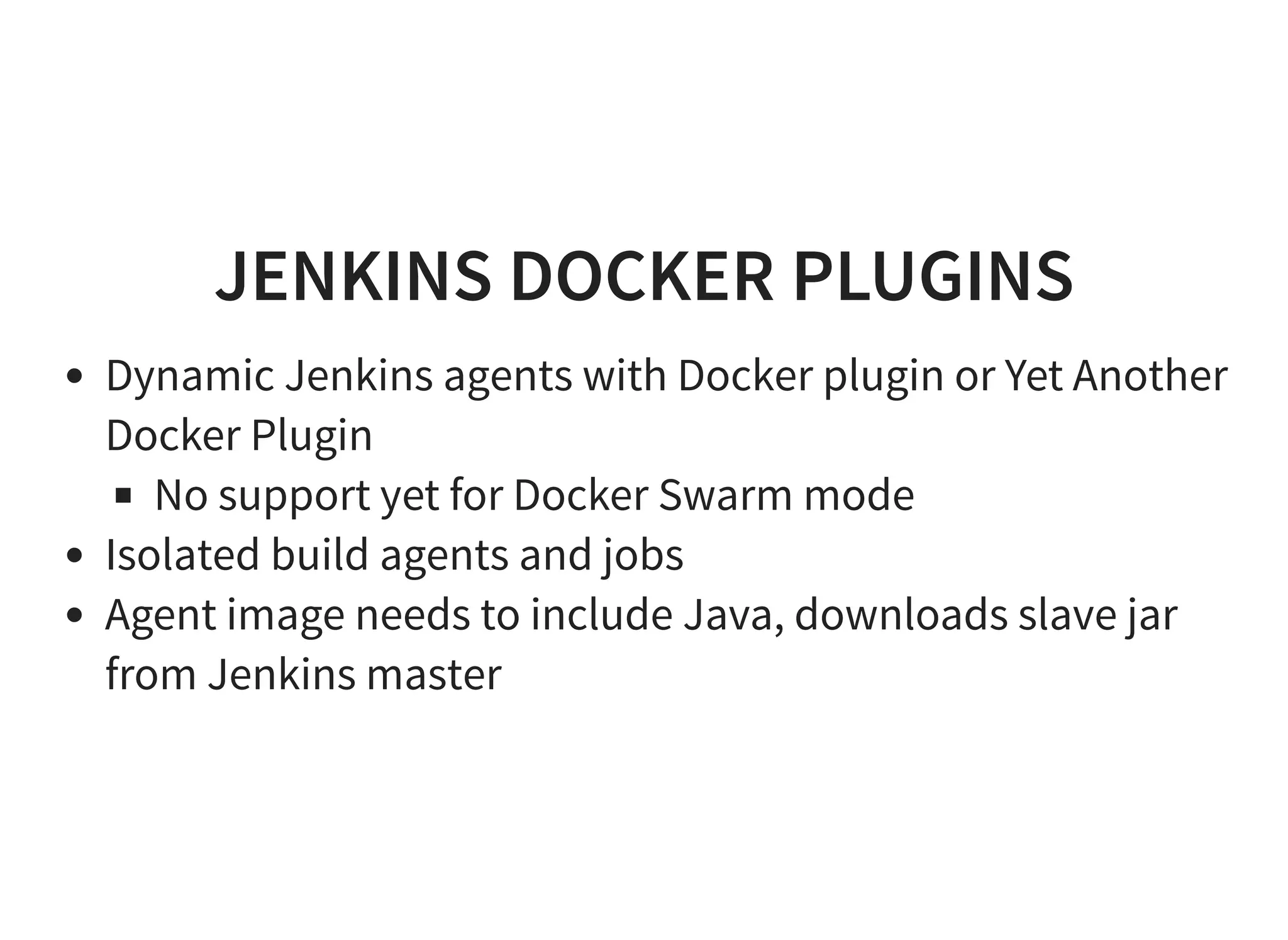
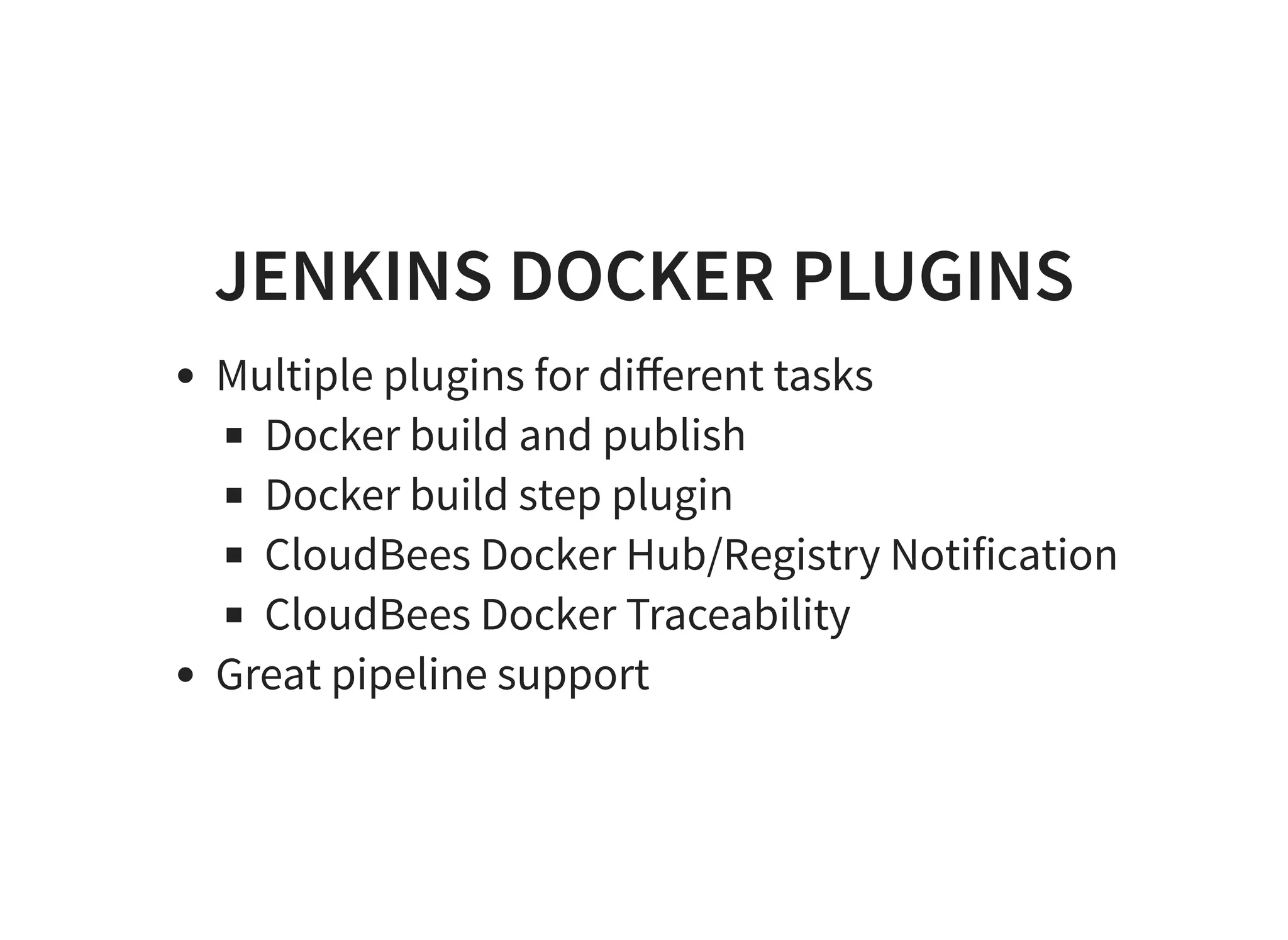
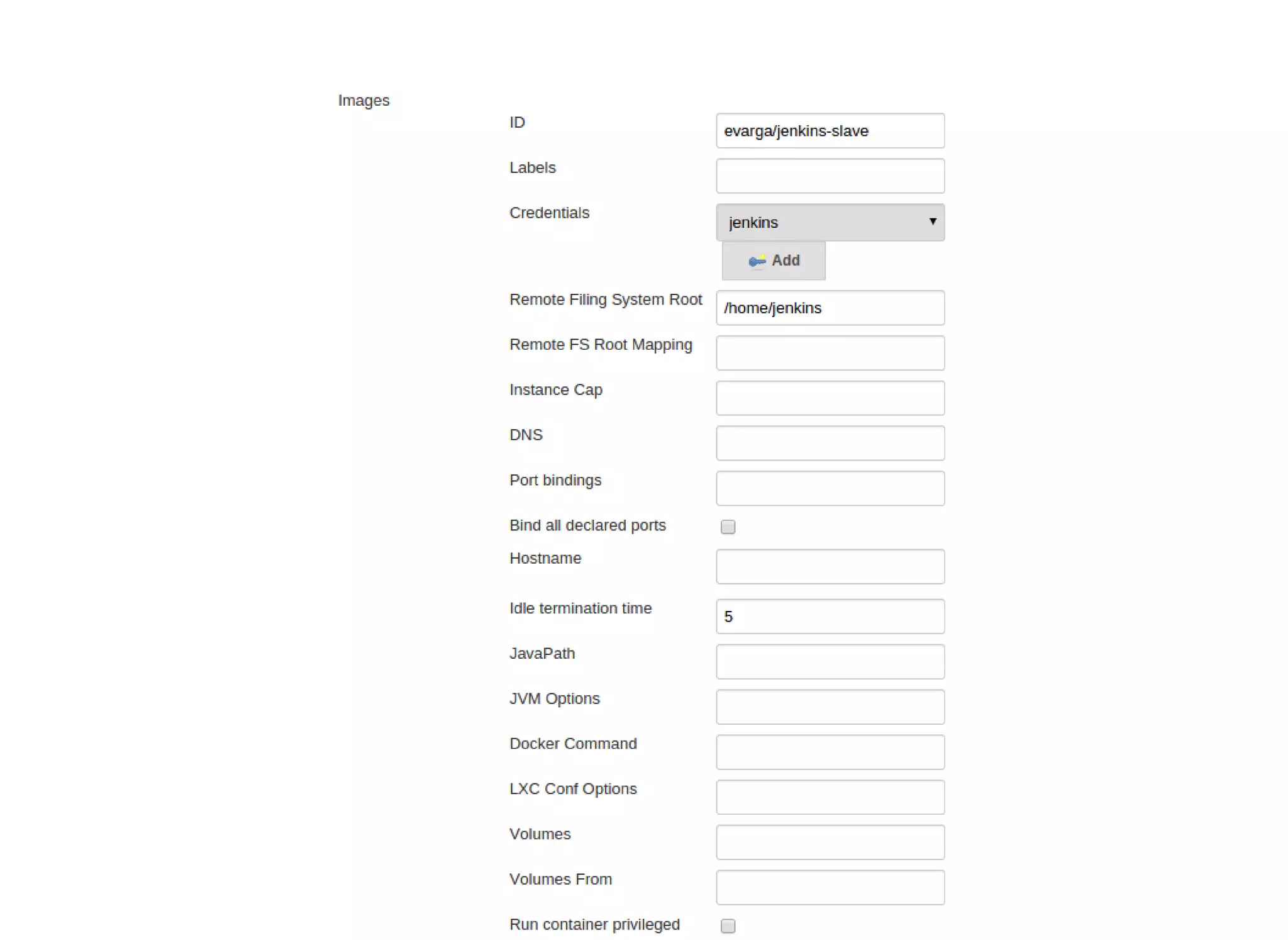



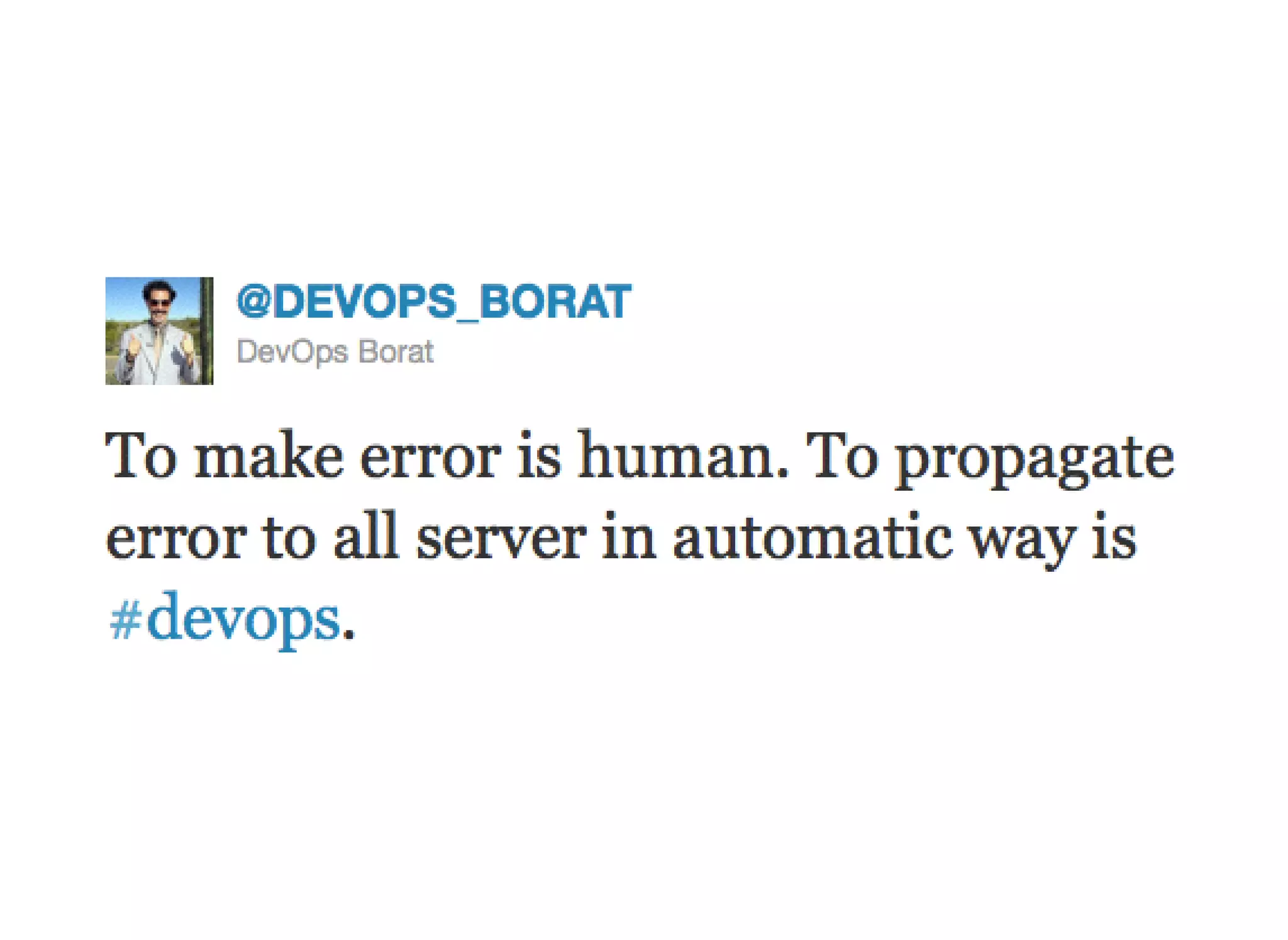
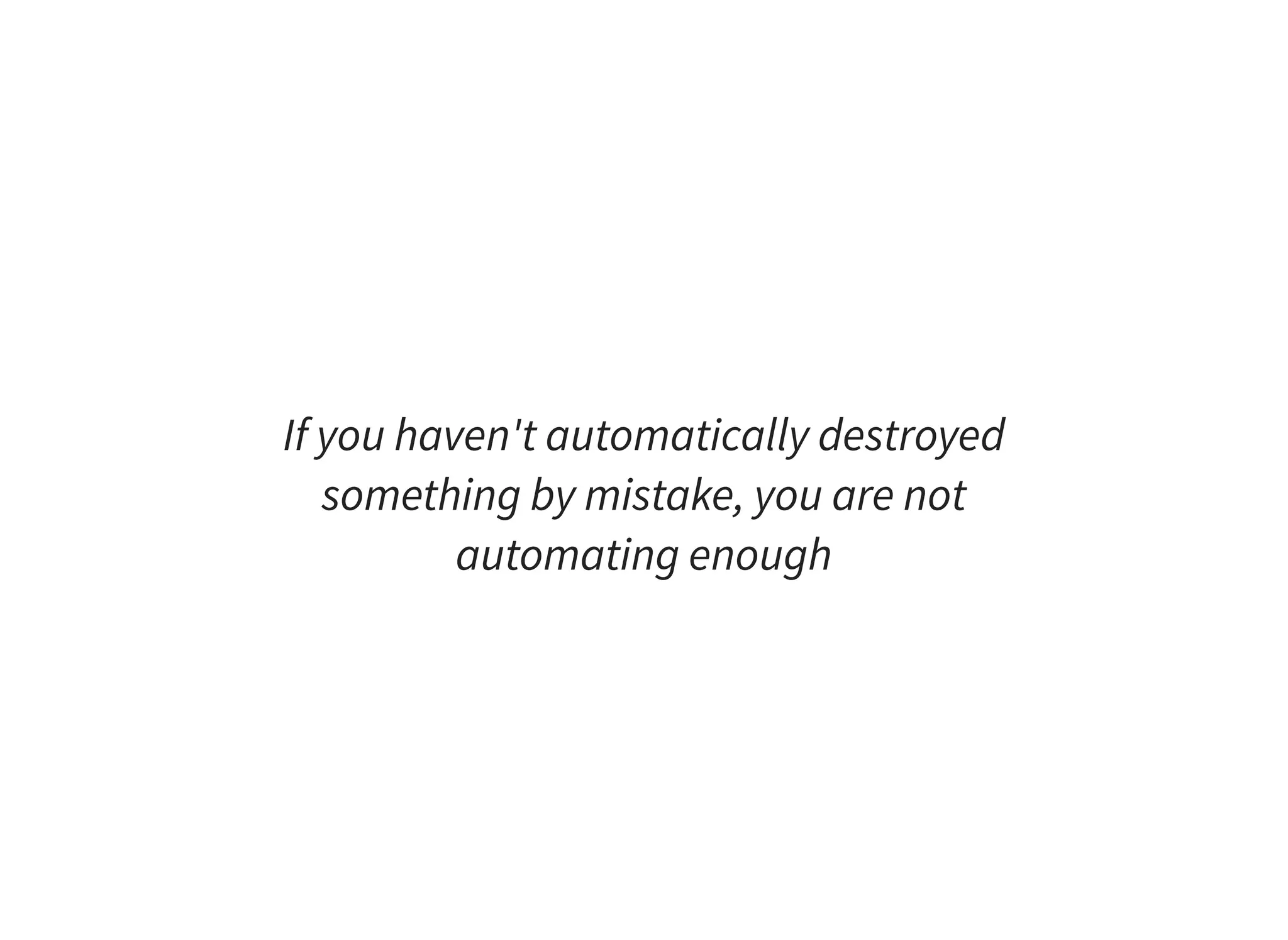
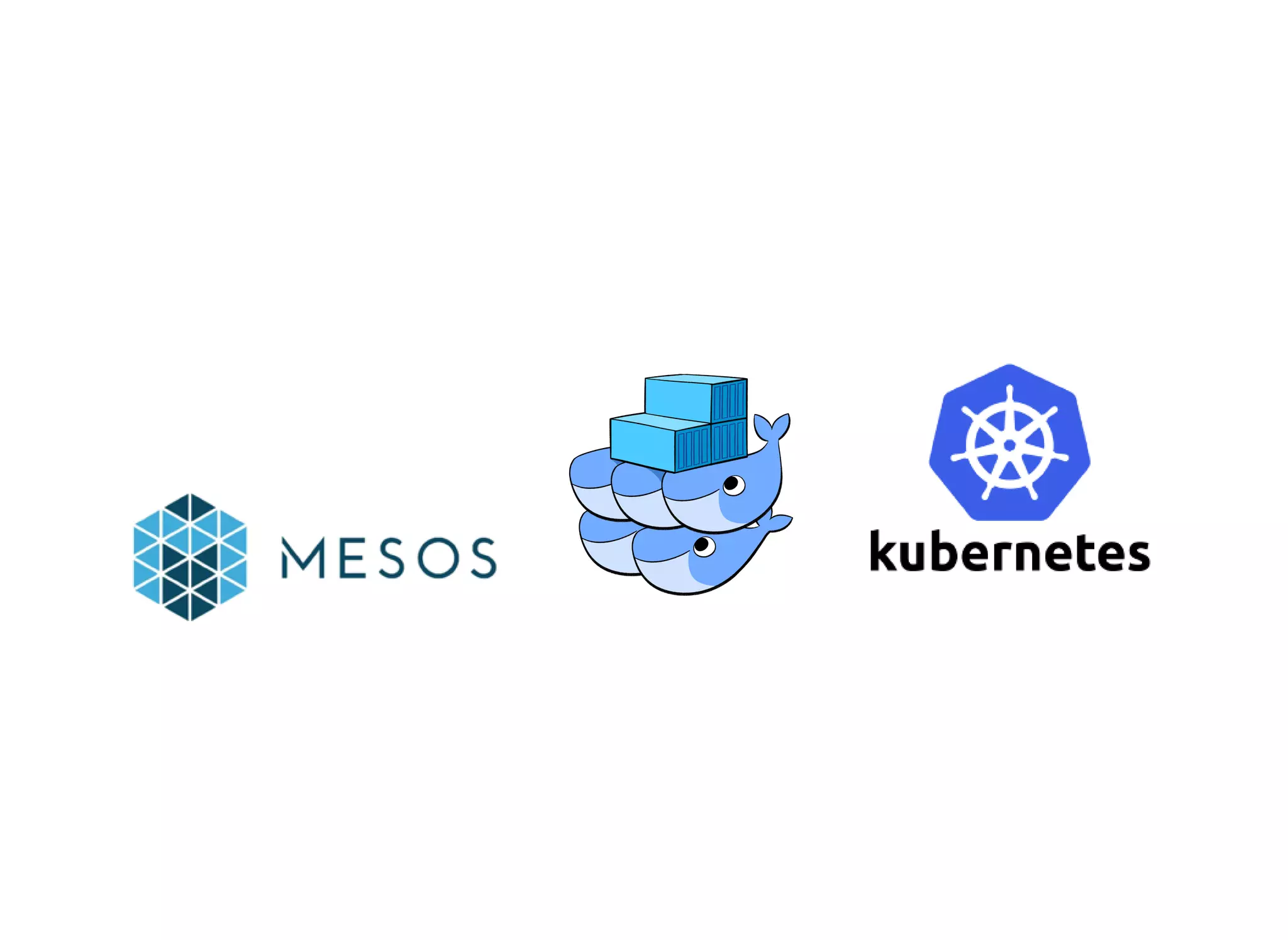
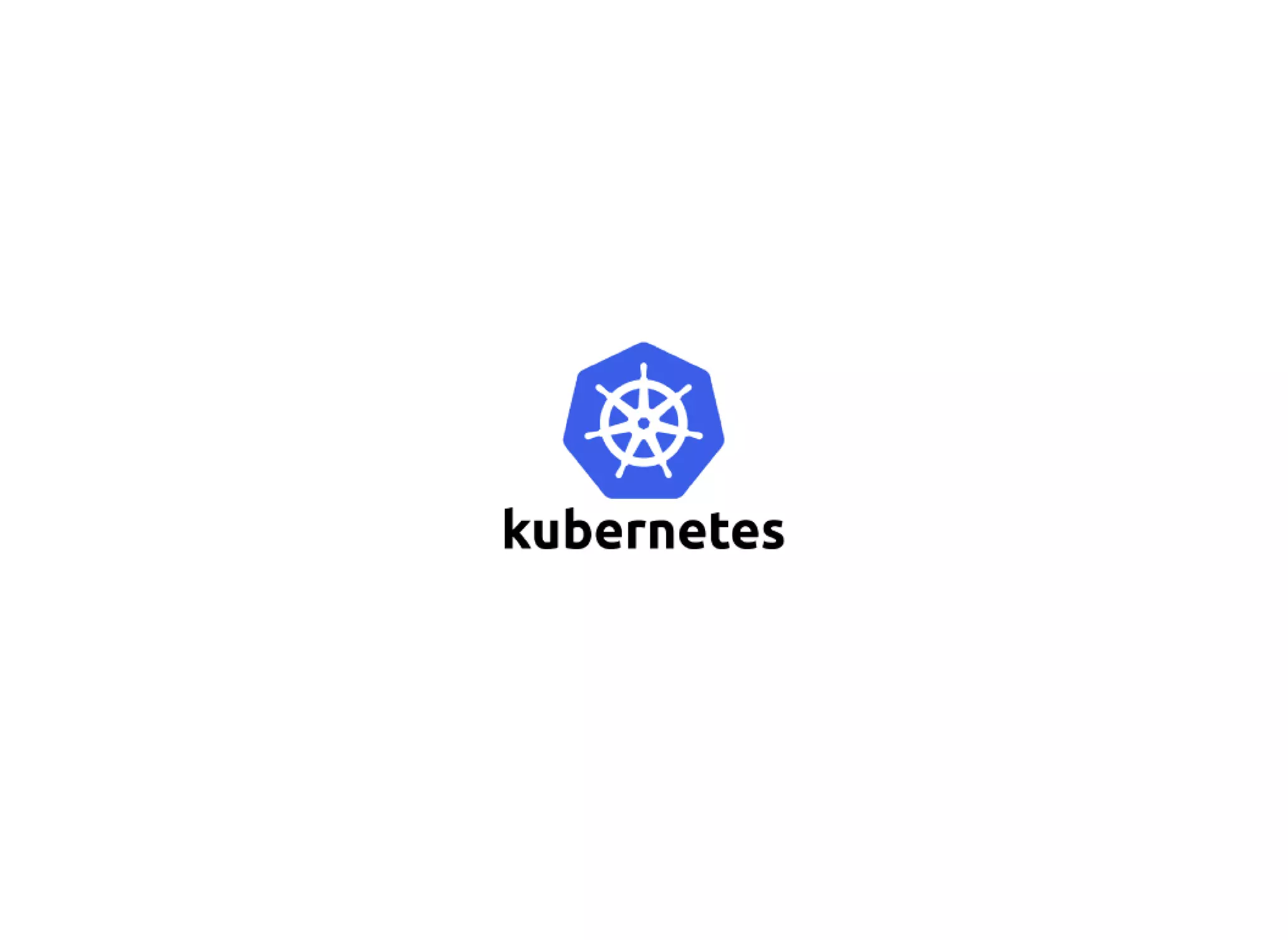
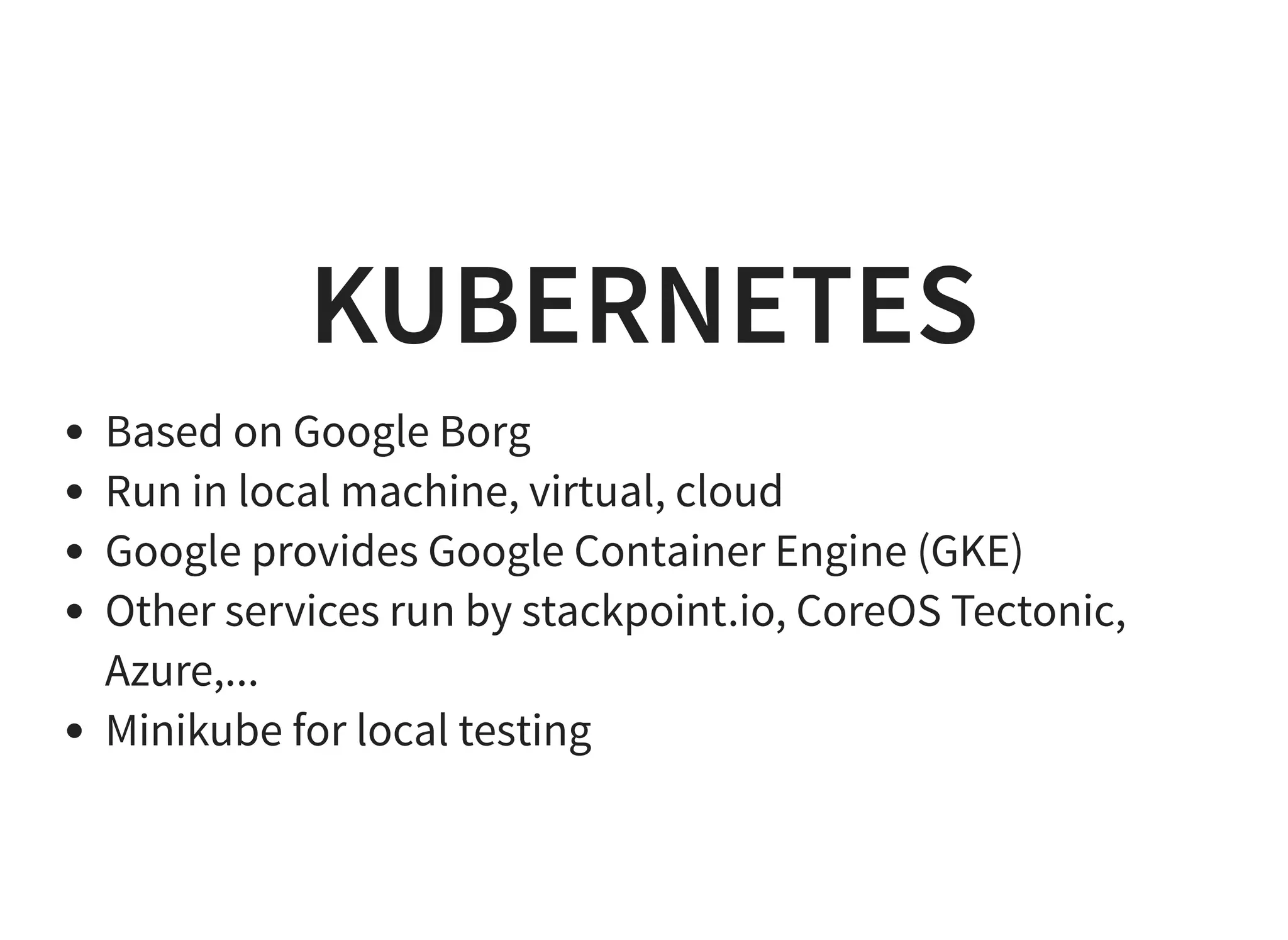

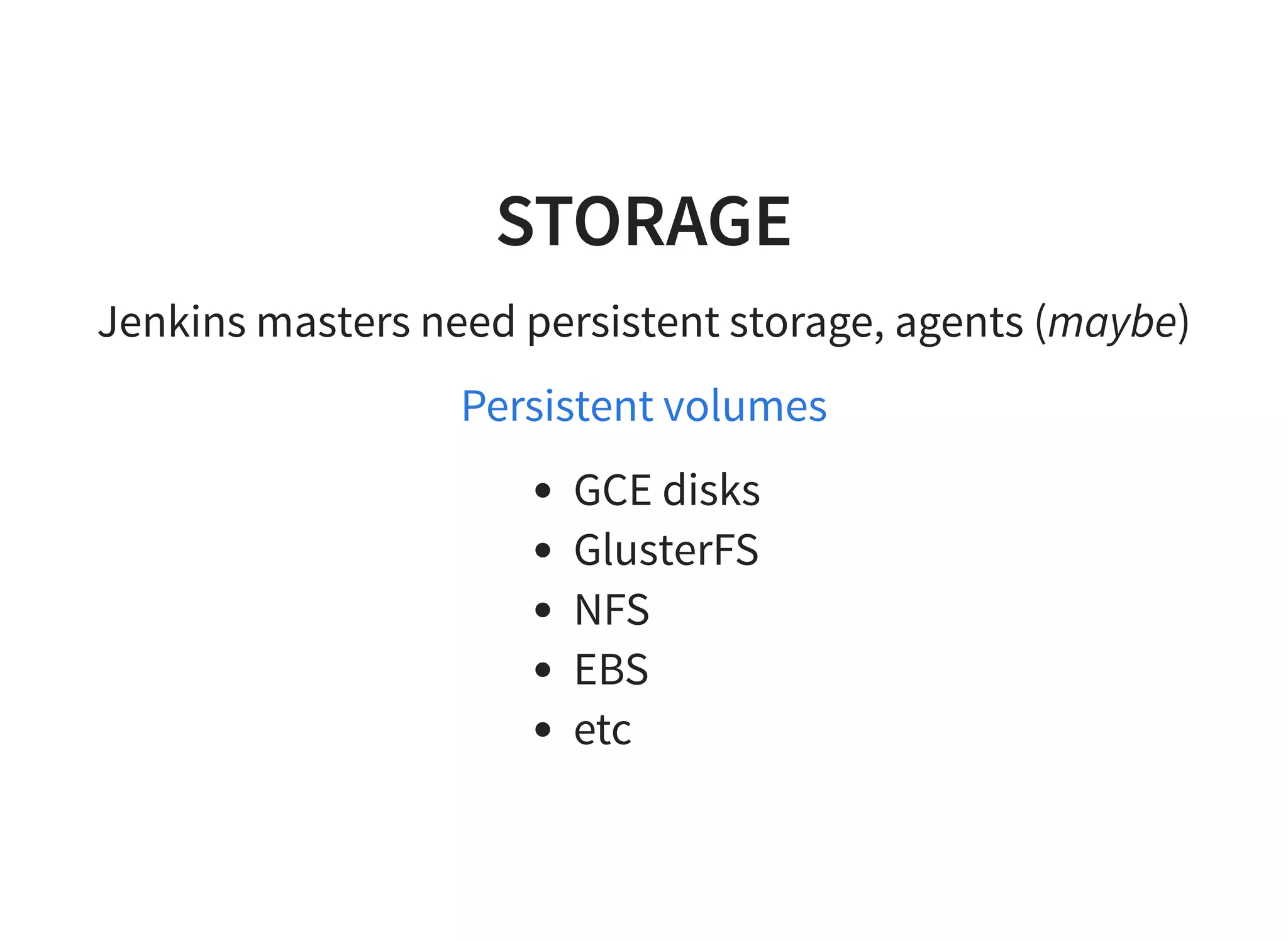

![PERMISSIONS containers: [...] securityContext: fsGroup: 1000 volumes: [...] Volumes which support ownership management are modified to be owned and writable by the GID specified in fsGroup](https://image.slidesharecdn.com/usingcontainersforcontinuousintegrationandcontinuousdelivery-170619081243/75/Using-containers-for-continuous-integration-and-continuous-delivery-Carlos-Sanchez-28-2048.jpg)
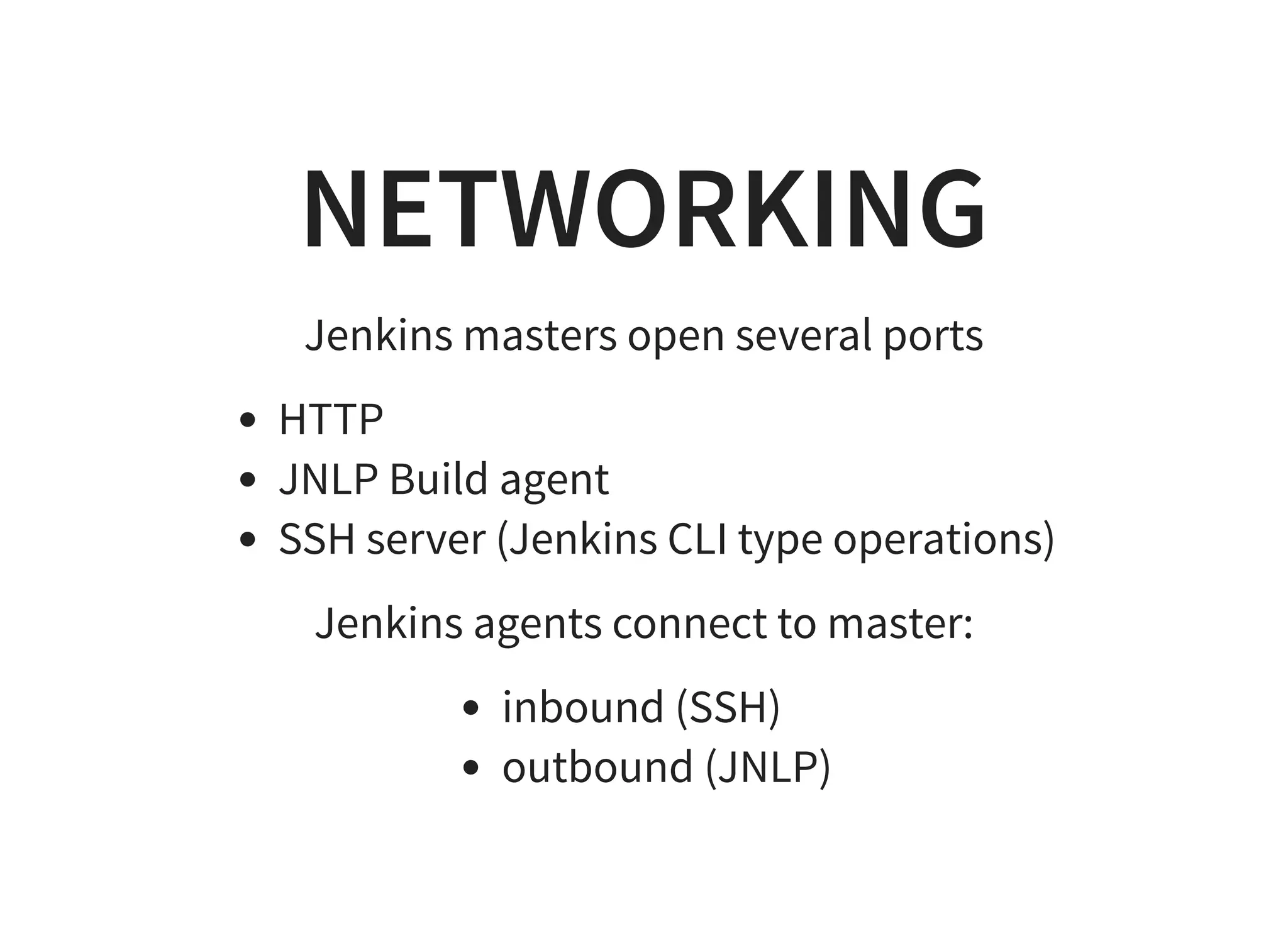
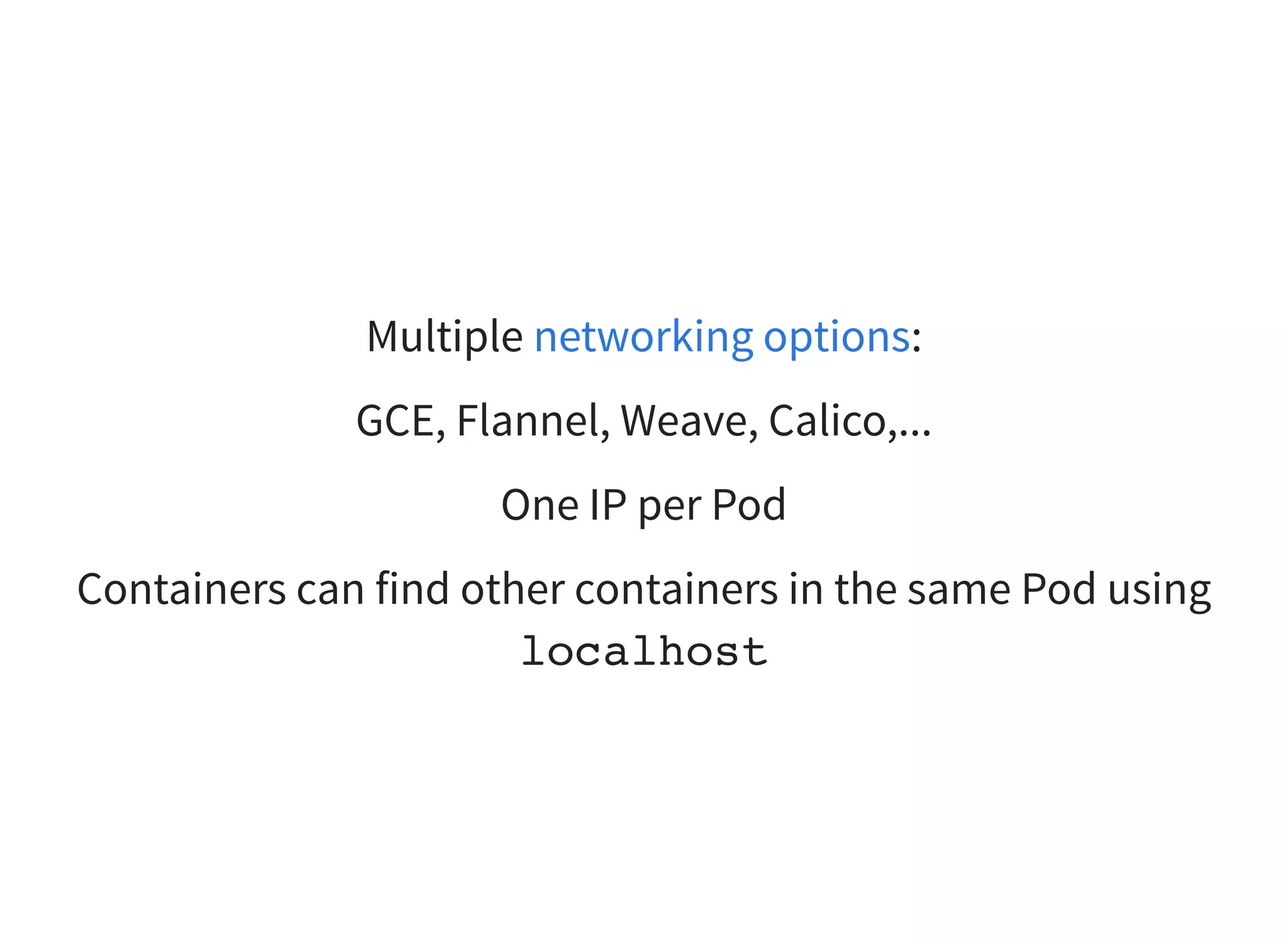

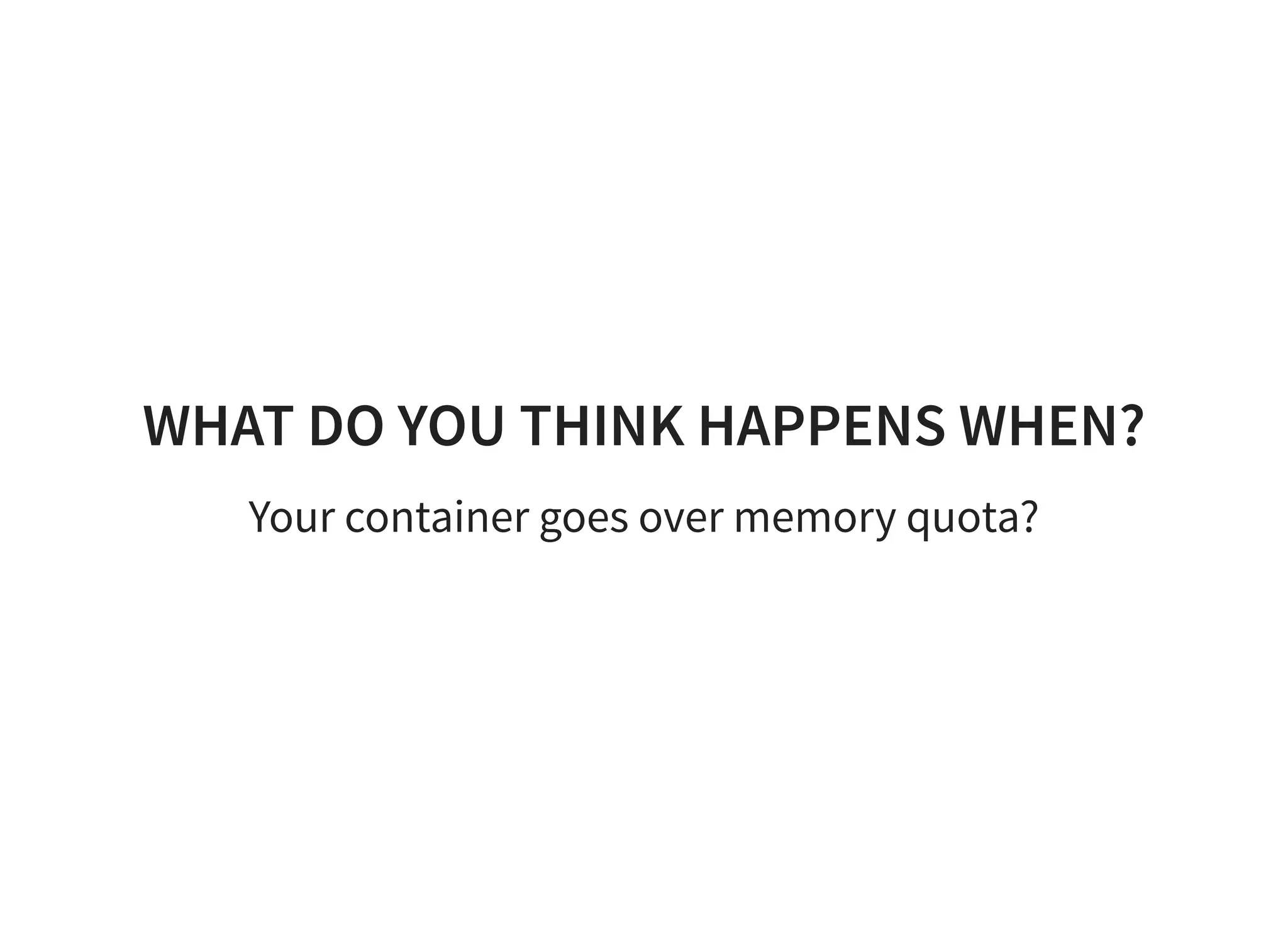

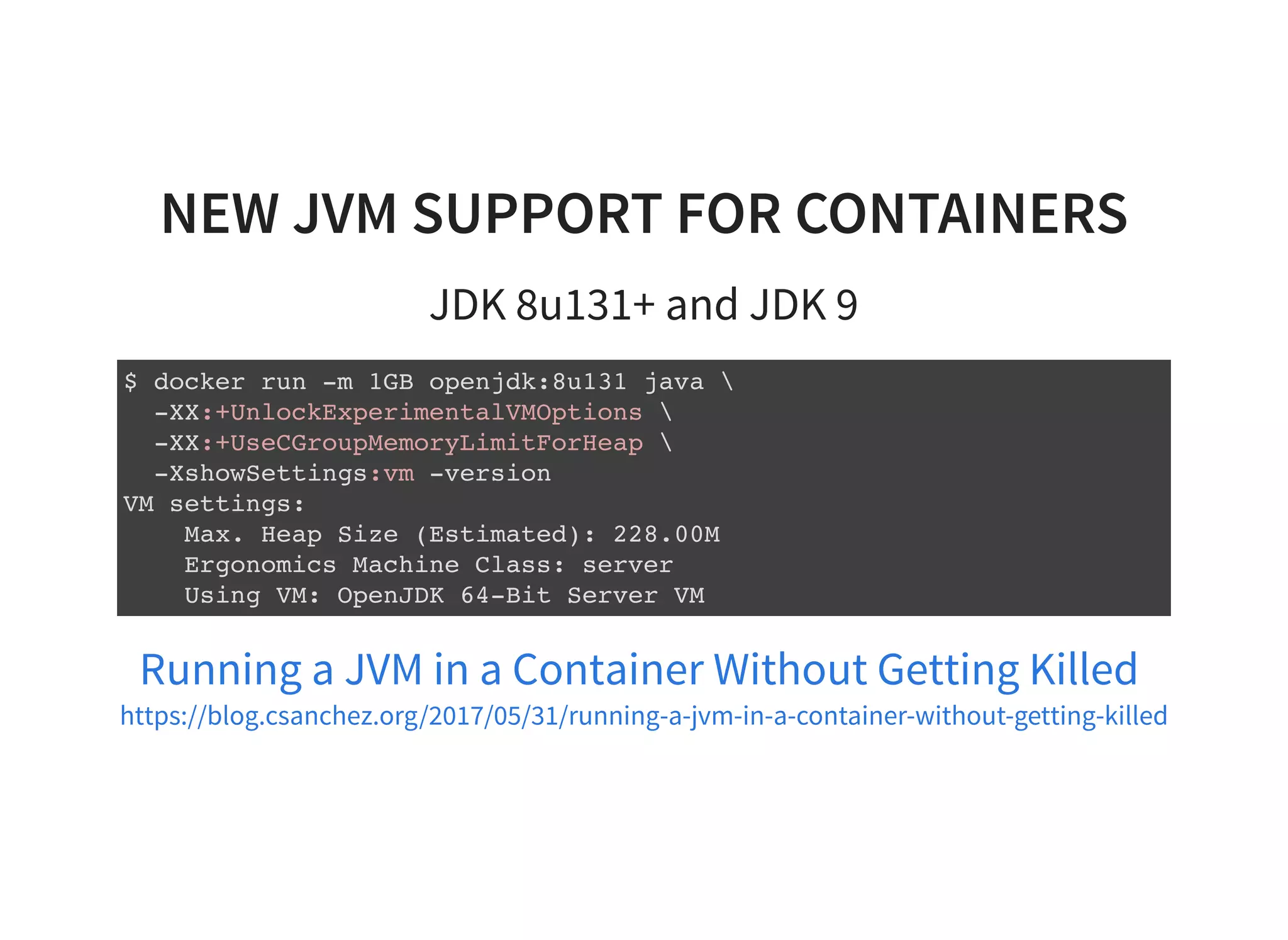


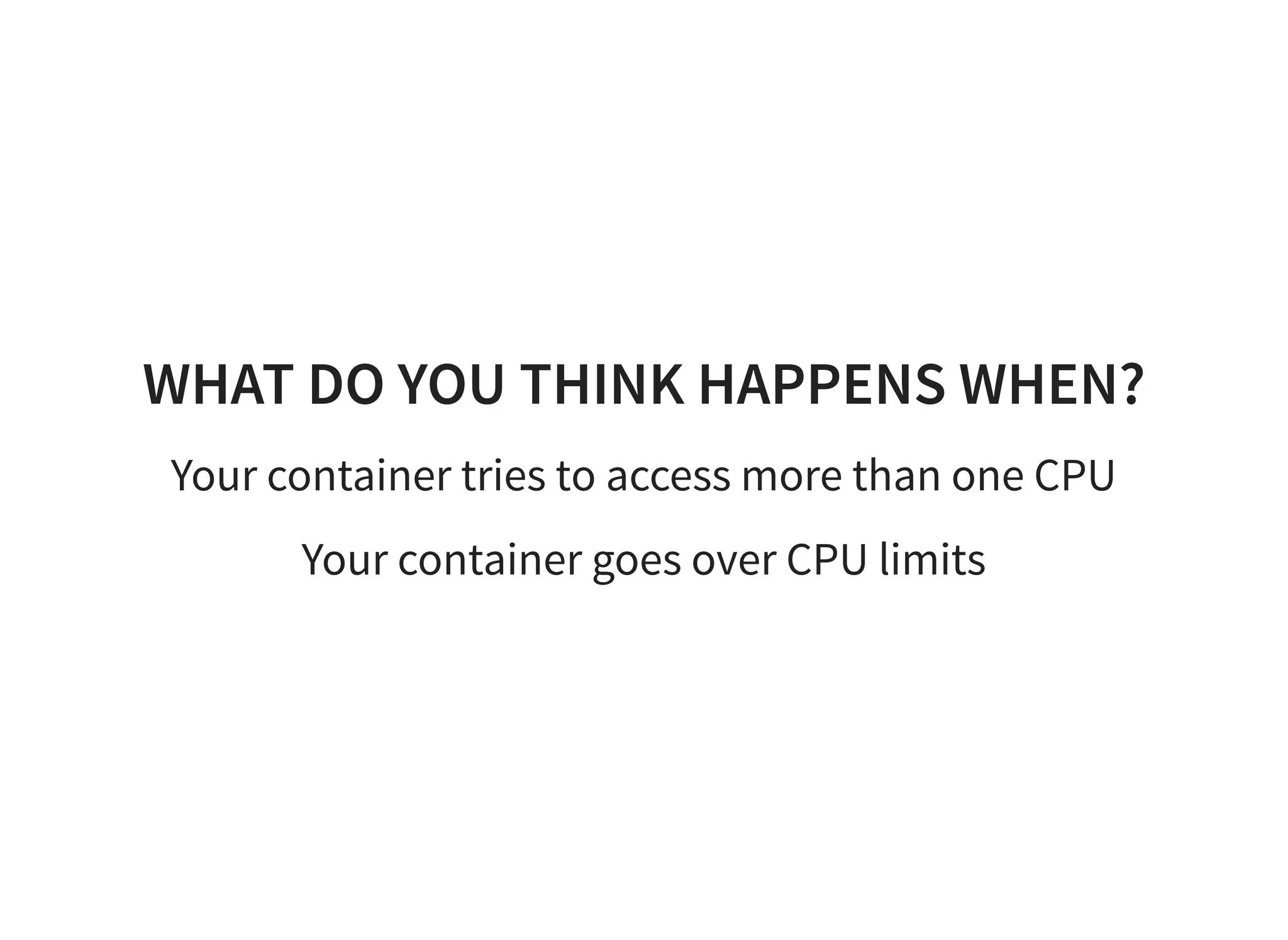


![JENKINS KUBERNETES PIPELINE podTemplate(label: 'maven', containers: [ containerTemplate(name: 'maven', image: 'maven:3.3.9-jdk-8-alpine' ttyEnabled: true, command: 'cat') ]) { node('maven') { stage('Get a Maven project') { git 'https://github.com/jenkinsci/kubernetes-plugin.git' container('maven') { stage('Build a Maven project') { sh 'mvn -B clean package' } } } } }](https://image.slidesharecdn.com/usingcontainersforcontinuousintegrationandcontinuousdelivery-170619081243/75/Using-containers-for-continuous-integration-and-continuous-delivery-Carlos-Sanchez-40-2048.jpg)
![Multi-language Pipeline podTemplate(label: 'maven-golang', containers: [ containerTemplate(name: 'maven', image: 'maven:3.3.9-jdk-8-alpine', ttyEnabled: true, command: 'cat'), containerTemplate(name: 'golang', image: 'golang:1.8.0', ttyEnabled: true, command: 'cat')]) { node('maven-golang') { stage('Build a Maven project') { git 'https://github.com/jenkinsci/kubernetes-plugin.git' container('maven') { sh 'mvn -B clean package' } } stage('Build a Golang project') { git url: 'https://github.com/hashicorp/terraform.git' container('golang') { sh """ mkdir -p /go/src/github.com/hashicorp ln -s `pwd` /go/src/github.com/hashicorp/terraform cd /go/src/github.com/hashicorp/terraform && make core-dev """ } } }](https://image.slidesharecdn.com/usingcontainersforcontinuousintegrationandcontinuousdelivery-170619081243/75/Using-containers-for-continuous-integration-and-continuous-delivery-Carlos-Sanchez-41-2048.jpg)

